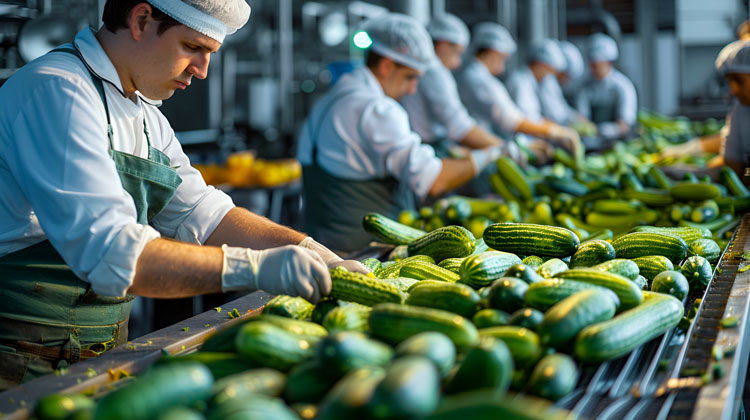Imagine a world where products in your manufacturing firm seamlessly roll from one point to another, effortlessly gliding along a continuous path. That is the work of conveyor belt systems, the unsung heroes of material handling. These systems are the backbone of efficient material transportation. They ensure a smooth flow of goods and minimize manual labor.
In this article, you’ll learn the basics of conveyor belt design, empowering you to make informed decisions that streamline your business processes. Read on!
Understanding Conveyor Belt Systems
The foundation of a conveyor belt system is a continuous loop made of belting material, commonly known as the conveyor belt. This belt is supported by a structure of idler rollers that help it move smoothly. A motor and pulley arrangement drives the loop They enable the conveyor belt to transport materials along a predetermined path.
The conveyor design of an effective conveyor belt system involves several critical components:
Drive system
A conveyor belt’s drive system powers and controls its movement. The motor and drive pulley configuration transmit energy to the belt, propelling it at the desired speed for efficient product transportation. Modern conveyor belt design incorporates variable speed drives, which allow for precise regulation of the belt’s velocity. This enhanced control enables optimized handling of different materials by adjusting the pace depending on their specific requirements.
Belting material
The belting is the core component of a belt conveyor system. It comes in a wide range of materials, such as rubber, PVC (polyvinyl chloride), fabric, or metal. The choice of belting material depends on several factors related to the items you need to move. For instance, rubber belting may be suitable for conveying abrasive or sharp materials, while metal belting can handle scorching items.
Idler rollers
Idler rollers are components that support and guide the conveyor belt’s smooth movement. While non-powered rollers minimize friction, allowing effortless gliding, powered rollers enable specialized functions.
Frame
The frame in a conveyor belt system provides structural support for the entire system. You can construct them from steel, aluminum, or other materials depending on the weight capacity and application. For instance, a heavy-duty steel frame might be necessary for a conveyor belt transporting massive machinery parts over long distances in a factory.
Take-up system
For smooth and reliable operation, conveyor belt designs incorporate a take-up system. Its mechanism automatically adjusts and maintains the proper belt tension. This prevents it from slipping or tracking improperly.
Improper tracking can cause the belt to rub against the frame or veer off course, which may damage materials or the system itself. The take-up system ensures the belt stays centered and moves efficiently along its intended path.
Controls
Modern conveyor belt designs feature user-friendly control panels allowing operators to adjust belt speed, start or stop movement, and integrate with other material handling equipment.
In food processing plants, for example, control panels enable you to synchronize belt conveyors with packaging machines and modulate belt speed to meet production demands while preventing bottlenecks. These integrated panels enhance efficiency, versatility, and ease of use across industries.
Types Of Conveyor Belt Systems
Conveyor belt design extends beyond the core components. Different configurations cater to specific material handling needs. Here are some common types of conveyor belt systems:
Flat belt conveyor
Conveyor belt designs featuring flat belts are highly versatile for horizons or slightly inclined transportation materials. For example, a flat belt conveyor can efficiently move boxes across a warehouse or transport raw ingredients in a food processing facility. Their simple horizontal design makes flat belt conveyors a popular choice across numerous industries handling various goods.
Roller conveyors

Roller conveyors are invaluable for transporting irregularly shaped, heavy, or bulk materials. These systems utilize a series of powered or non-powered rollers that easily accommodate awkward and oversized items. For instance, roller conveyors are among the construction equipment builders use to transport large precast concrete components across construction sites with smooth, low-friction rolling.
Cleated conveyors
Cleated conveyor belt designs incorporate raised protrusions or cleats on the belt surface. This prevents transported materials from slipping during inclined movement. These cleated belts excel in applications requiring negotiating upward or downward slopes.
Considerations In Conveyor Belt Design
Effective conveyor belt design necessitates a thorough understanding of the application. Here are some key aspects to consider:
Material characteristics
Materials traits like size, shape, weight, and surface properties influence crucial elements. For instance, conveying large automotive components requires heavy-duty belting and sturdy framing. However, transporting lightweight consumer goods allows more economical designs. Proper belt selection and capacity ensure efficient material flow matching product characteristics.
Capacity requirements
Successful convey belt designs accommodate the expected product weight and volume. For high-capacity applications like bottling plants, conveyors transport thousands of filled containers per hour without interruption. On the other hand, lower capacities suit operations with smaller throughput.
Maintenance needs
A thoughtful conveyor belt design allows easy access to critical components like bearings and drive systems. This accessibility enables regular preventative maintenance, minimizing disruptive downtime. For instance, automotive conveyor belts use hinged beds that swing open for quick gear inspections and lubrication. Prioritizing maintainability from the start ensures efficient, continuous operation.
Integration with existing systems
An effective and functional conveyor belt system integrates with current handling equipment for streamlined operations. For example, a new conveyor at a distribution center connects effortlessly to existing systems and loading docks. This cohesive integration prevents bottlenecks and enables efficient product flow from start to finish.
Conclusion
Conveyor belts are vital components in diverse industries, enhancing efficiency and productivity through tailored designs. This article explored the essentials of conveyor belt design, emphasizing the importance of component selection in crafting effective conveyor systems. Different conveyor types cater to specific material handling needs, so you’ll have to select a conveyor system design depending on your needs. Understanding these elements will allow you to optimize your conveyor systems and make informed decisions that improve operations and economic efficiency.









